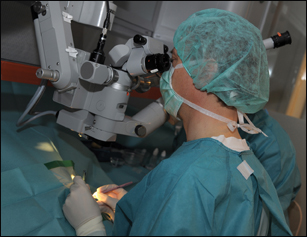PUBLICATION EXCLUSIVE: Descemet's membrane endothelial keratoplasty slowly on the rise
Lamellar techniques have almost entirely replaced penetrating keratoplasty. They have undergone progressive refinements and have more recently evolved toward minimizing the presence of allogenic tissue in the eye to prevent rejection and graft failure.
“Overall, if we can work toward smaller grafts or no graft at all, this is going to benefit the patient in many ways. On the other hand, if we can multiply the number of grafts we can obtain from the same donor, we can reduce the costs and the problem of tissue shortage in some areas of the world,” Gerrit Melles, MD, PhD, said.
Melles, a pioneer and innovator in lamellar keratoplasty, recently opened a branch office of his Netherlands Institute for Innovative Ocular Surgery in San Diego. In the U.S., he said, he has found a more open environment that welcomes innovation and is eager to pursue new projects.

Image: Melles G
“We have many partners in the U.S., and it is easier for us to work together if we are closer. Our main goal is to design techniques and to design the eye banking techniques that support them. Eye banks and clinics will make decisions together and work synergistically,” he said.
Slow penetration despite superior outcomes
Descemet’s membrane endothelial keratoplasty is not the mainstream procedure for endothelial transplantation in the U.S. or Europe. In the U.S., DMEK currently represents only 13% to 14% of all endothelial keratoplasty cases.
“According to 2016 statistics of the Eye Bank Association of America, out of 28,327 cases of EK last year in the U.S., only 6,459 were DMEK,” Mark A. Terry, MD, said.

Contrary to poor adoption of DMEK, results in terms of visual recovery and quality of vision are significantly better with DMEK. In a study Terry presented at the American Academy of Ophthalmology meeting in 2016, in patients who had one eye operated with DMEK and the contralateral eye with Descemet’s stripping automated endothelial keratoplasty, with 20/20 vision in both eyes, the vast majority of patients cited having significantly better quality of vision in the DMEK eye.
“More than 60% of our patients are 20/20 or better at 6 months. Our published re-bubble rate is about 6%, graft failure is less than 1%, and endothelial cell loss is generally less than 30% at 6 months. DMEK gives better and faster vision, so why are people still so hesitant to do DMEK?” Terry asked.
- Click here to read the full publication exclusive, Cover Story, published in Ocular Surgery News U.S. Edition, July 25, 2017.
